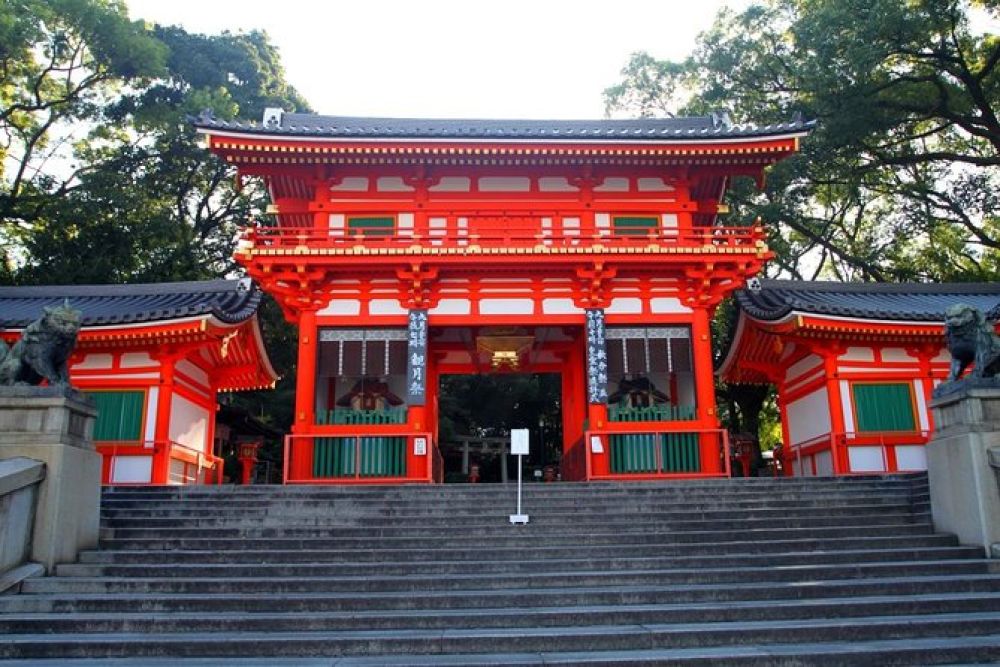

Yasaka Shrine, also known as Gion Shrine, has long been a significant spiritual and cultural landmark in Kyoto, Japan. The shrine's history extends well into the past, having been founded over 1350 years ago in 656 AD. It was established to protect the city from epidemics and evil and quickly became an important institution in Kyoto's religious and daily life.
Tourism at Yasaka Shrine began to flourish with the start of the famous Gion Matsuri, which dates back to the year 869. Originally a religious ceremony to appease the gods during an epidemic, the festival evolved into a grand annual event, attracting spectators and devotees from across Japan. It strengthened the shrine's position on the city's cultural map and, over the centuries, became a paramount draw for tourists.
The Edo Period (1603-1868) brought about a cultural renaissance in Japan, which saw the rise in popularity of pilgrimages to sacred sites. Yasaka Shrine, being an integral part of Kyoto's spiritual landscape, became a favored destination for pilgrims. This period could be seen as the advent of organized tourism in the Kyoto area, as facilities for travelers, including tea houses and inns, began to develop.
In the modern era, the shrine has maintained its allure and continues to be an iconic symbol of Kyoto. The post-World War II period saw a resurgence and transformation of Japan's tourism industry, with the country opening up to international visitors and Yasaka Shrine distinguishing itself as a must-visit location for both local and foreign tourists.
Recent trends in tourism have seen visitors engage more deeply with the cultural aspects of their destinations. At Yasaka Shrine, tourists often partake in traditional ceremonies, seasonal festivals, and enjoy the beautiful Shinto architecture and year-round natural beauty. The surrounding Gion district, famous for its geisha culture, further enhances the shrine's appeal, offering a glimpse into Japan's rich historical tapestry.
Today, Yasaka Shrine, with its accessible location at the end of Shijo-dori, integrates tradition and modernity. Visitors to Kyoto can use smartphone apps and online resources to discover the shrine's history, partake in traditional events, and even interact with the shrine's community. The continued popularity of the Gion Matsuri, particularly among international audiences, ensures that Yasaka Shrine remains a significant contributor to Kyoto's vibrant tourism sector.
Moreover, efforts towards sustainable tourism have become prevalent, and Yasaka Shrine participates in these by encouraging respectful cultural exchanges and preserving the natural and historical integrity of the site. The shrine’s administration promotes eco-friendly practices to ensure that this esteemed cultural treasure can continue to tell its centuries-old story for generations to come.
Yasaka Shrine remains a cornerstone of Kyoto's historical allure and a testament to the city's commitment to preserving its cultural legacy while adapting to the ever-evolving landscape of global tourism.